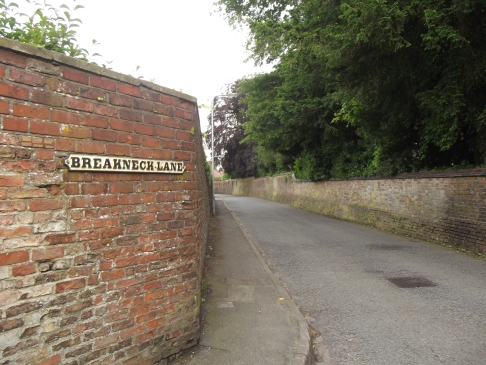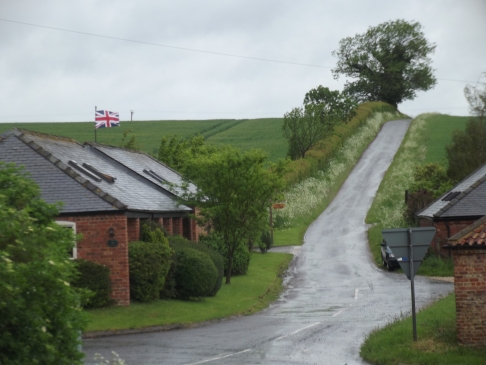..every.single.day.
While we’re still bothering to pay meteorologists, I suppose there’s some comfort to be had from knowing it’s at least going to be no worse than this until the end of the century…particularly if you live on top of one of the only hills for 50 miles around. Like Normanby-le-Wold, for example:
Yes, only 550 feet above sea level, but high enough to get an air traffic control radar station:
Or possibly a device to enable the US government to monitor your Twitter account, depending on your point of view…
Anyway, there’s a village here..and a Church – another “murder most Fowler”:
According to the blurb in the Church’s leaflet, the “Normanby” part of the name indicates it was -at the time – a village settled by Norsemen (Norwegians), as named by (and thereby differentiated from) the Danes who occupied most other surrounding settlements. The “Le Wold” part was apparently a relatively recent adoption, as it was once more usually known as ‘Normanby-on-the-Hill’, to distinguish it from the three other Normanbys in the county.
There was once an Anglo-Saxon church here (and an Anglo Saxon farmstead and nearby burial pit were excavated nearby in the late 1960s), but no trace of it remains. The present population seems to be, once again, considerably less than that recorded in the Domesday book; the immediate village consisting now of about half a dozen “gentrified” buildings, and presumably the farmer who sees fit to let his cattle turn a public footpath into a quagmire of mud and slurry, in that petty-minded way that makes farmers so beloved the world over.
Next to the church, as you can see here – across the beautifully-kept churchyard – is an 18th century brick building originally used as a Sunday School (http://en.wikipedia.org/wiki/Sunday_school) but which later became a shed for storing a threshing machine:
So, then, the architecture of the present church – again, according to the leaflet – suggests it dates from the 13th century and was, as usual, built from the local ironstone which seems to have a durability just above that of cinder toffee. In 1296, there was a ‘scandalous incident’ recorded here, when a gang of men burst into an evening service and roughed up the rector, Gilbert of Lafford, and his clerk. Nobody knows why, but the men concerned – “sons of Belial, stirred up by a diabolical spirit” – were duly excommunicated.
A decline in population led the church to gradually fall into relative disuse, and part of it was even demolished. However, an increase in population during the later Victorian era caused the parish to vote for a thorough restoration which was carried out – in 1867/8 – by our old friend-of-the-Gothic and local architect, James Fowler who did a very reasonable job, for the £1,000 cost incurred. The south aisle and the lower portions of the church tower are all that remains of the 13th century building; the rest is his work.
I have to say, the interior is one of the most pleasant I’ve seen so far of any of the local parish churches I’ve wandered around in. Very pleasing to the eye, and neither cold nor damp:
My camera, with its own relentless digital drive for ‘optimising’ everything, doesn’t really do the place justice, as it looked then in the mellow evening light, however much I struggled with it:
The most striking thing about the interior, however – immediately entering through the door – is the collection of three large Victorian medieval-style paintings that hang on the walls. It seems they were salvaged, somehow, from a church in Burton on Trent, in Staffordshire:
Left to right: St Faith (holding the grid-iron on which she was roasted to death); Moses, with tablets; Christ; Aaron; St Martin of Tours.
The second painting, above the doorway to the tower, depicts the entry into Jerusalem:
Apparently, this is Christ being begged by St Peter to calm a storm on the Sea of Galilee, with St Werburgh (left) and St Boniface of Devon (right), looking on.



























































































































































































